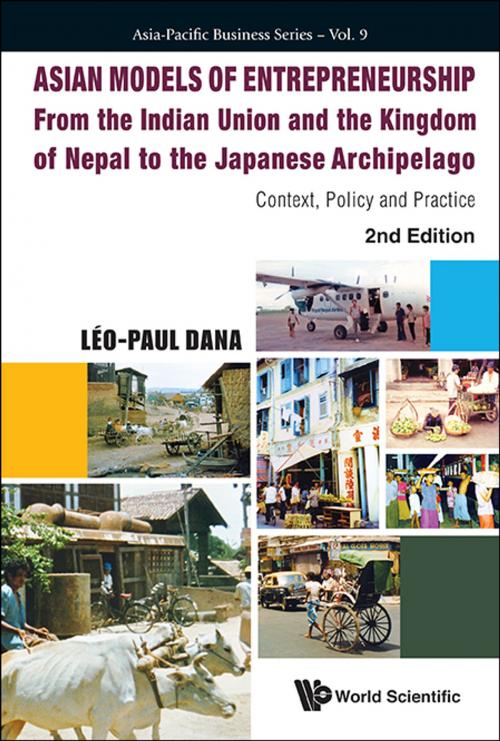Asian Models of Entrepreneurship — From the Indian Union and Nepal to the Japanese Archipelago
Context, Policy and Practice
Business & Finance, Economics, Development & Growth, Career Planning & Job Hunting, Entrepreneurship, Entrepreneurship & Small Business| Author: | Léo-Paul Dana | ISBN: | 9789814590273 |
| Publisher: | World Scientific Publishing Company | Publication: | June 13, 2014 |
| Imprint: | WSPC | Language: | English |
| Author: | Léo-Paul Dana |
| ISBN: | 9789814590273 |
| Publisher: | World Scientific Publishing Company |
| Publication: | June 13, 2014 |
| Imprint: | WSPC |
| Language: | English |
In this book, Leo-Paul Dana makes it clear that much can be learnt about the nature of entrepreneurial activity when we delve into the unique characteristics of different nations of South Asia, South-east Asia and East Asia. Through in-depth analyses and comprehensive reviews of many Asian countries, the profound differences both among and within countries of the region become vividly apparent. Dana juxtaposes the explosion in entrepreneurial growth within China against the struggles to build an entrepreneurial community in Japan, or the enlightened public policy leadership in Singapore against the crisis-driven developments in Korea. The range of factors identified within each of the 15 countries examined by Dana is not an example of random influences on the entrepreneurial process, because they can be construed in more systematic and logical ways. Thus, the book uncovers the Chinese model of gradual transition, the Royal Cambodian model, and the Doi-Moi model, among many others. The reader is challenged to grasp these different models, and identify their commonalities and differences.
Contents:
- Introduction
- Culture and Enterprise
- Cambodia
- China
- India
- Indonesia
- Japan
- Korea
- Laos
- Malaysia
- Myanmar
- Nepal
- The Philippines
- Singapore
- Taiwan
- Thailand
- Vietnam
- Conclusion
Readership: Business undergraduates; practitioners and entrepreneurs who are interested in conducting business in Asia.
Key Features:
- There are 15 cases about real firms across Asia; readers will be challenged to grasp these different models, and identify their commonalities and differences
- The illustrations are useful for students and practitioners interested in studying entrepreneurship in Asia
- The scope of cases across Asia make this book appealing as most books tend to focus on just Southeast Asia or on major East Asian powers (China, Japan, and South Korea separately)
In this book, Leo-Paul Dana makes it clear that much can be learnt about the nature of entrepreneurial activity when we delve into the unique characteristics of different nations of South Asia, South-east Asia and East Asia. Through in-depth analyses and comprehensive reviews of many Asian countries, the profound differences both among and within countries of the region become vividly apparent. Dana juxtaposes the explosion in entrepreneurial growth within China against the struggles to build an entrepreneurial community in Japan, or the enlightened public policy leadership in Singapore against the crisis-driven developments in Korea. The range of factors identified within each of the 15 countries examined by Dana is not an example of random influences on the entrepreneurial process, because they can be construed in more systematic and logical ways. Thus, the book uncovers the Chinese model of gradual transition, the Royal Cambodian model, and the Doi-Moi model, among many others. The reader is challenged to grasp these different models, and identify their commonalities and differences.
Contents:
- Introduction
- Culture and Enterprise
- Cambodia
- China
- India
- Indonesia
- Japan
- Korea
- Laos
- Malaysia
- Myanmar
- Nepal
- The Philippines
- Singapore
- Taiwan
- Thailand
- Vietnam
- Conclusion
Readership: Business undergraduates; practitioners and entrepreneurs who are interested in conducting business in Asia.
Key Features:
- There are 15 cases about real firms across Asia; readers will be challenged to grasp these different models, and identify their commonalities and differences
- The illustrations are useful for students and practitioners interested in studying entrepreneurship in Asia
- The scope of cases across Asia make this book appealing as most books tend to focus on just Southeast Asia or on major East Asian powers (China, Japan, and South Korea separately)















